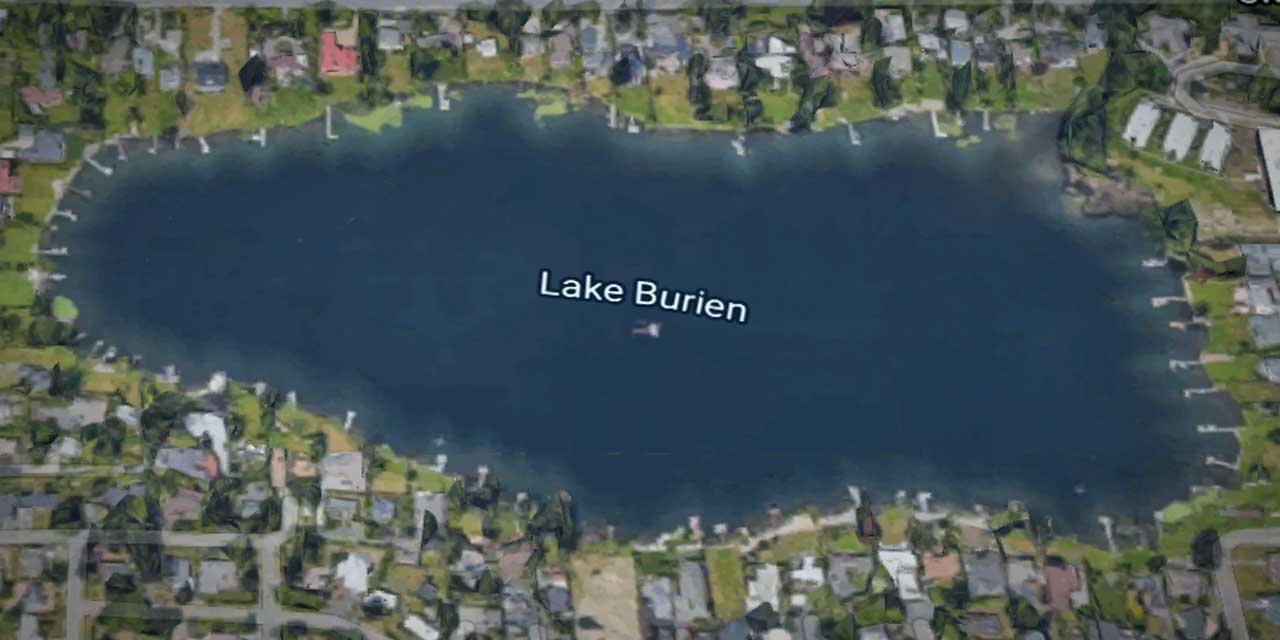An algal bloom in Lake Burien had high concentrations of the toxin microcystin, King County reported this week.
The county is warning that people and pets should not swim in the lake, drink lake water, or engage in other water-contact activities.
According to Wikipedia:
“Microcystins—or cyanoginosins—are a class of toxins produced by certain freshwater blue-green algae. Over 50 different microcystins have been discovered so far, of which microcystin-LR is the most common. Chemically they are cyclic heptapeptides produced through nonribosomal peptide synthases.
“Cyanobacteria can produce microcystins in large quantities during algal blooms which then pose a major threat to drinking and irrigation water supplies, and the environment at large.”
Microcystins are hepatotoxic, i.e., able to cause serious damage to the liver. Once ingested, the toxin travels to the liver via the bile acid transport system, where most is stored, though some remains in the blood stream and may contaminate tissue. Acute health effects of Microcystin-LR are abdominal pain, vomiting and nausea, diarrhea, headache, blistering around the mouth, and after inhalation sore throat, dry cough, and pneumonia.
Visit the Northwest Toxic Algae website for more information.


